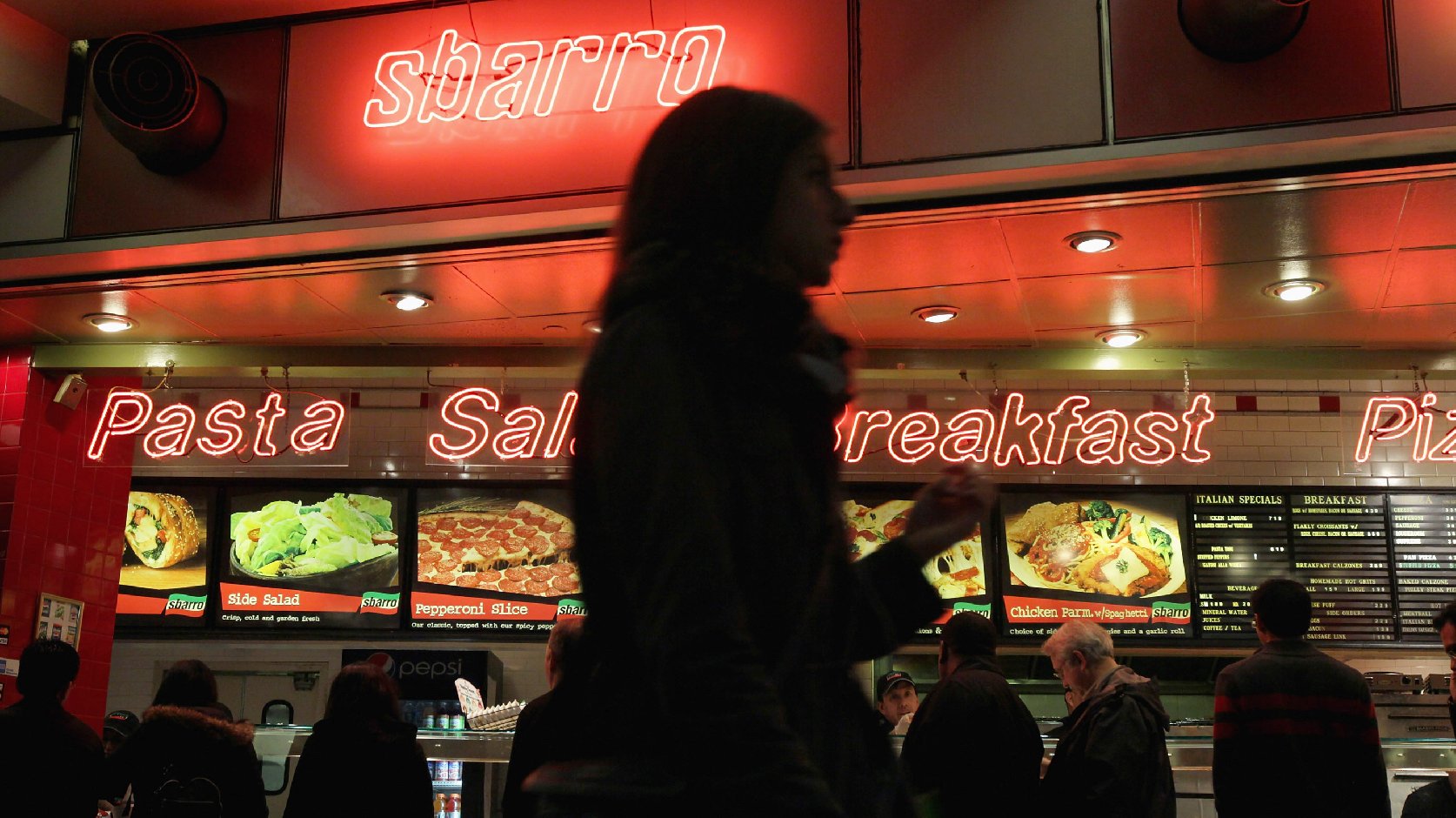That problem seems to have persisted. Most of the newly closed locations were also in mall food courts with a declining customer base, Sbarro spokesman Jon Dedmon tells The Salt.
But it's clearly not the case for all mall restaurants. The Cheesecake Factory, for example, grew its profits 16 percent in 2013. Restaurant analyst Michael Whiteman says shopping malls have actually been relying on restaurants to fill empty retail space and bring in more customers.
"As e-commerce has drained sales from traditional retail shops, [mall] developers successfully have been using food to provide a humanizing experience that you can't get on your smartphone or desktop," Whiteman says.
Still, the restaurant industry overall has been stagnating since even before the recession, says Harry Balzer of NPD Group. In 2000, the average American ate out 215 times. Last year, that number shrunk to 192, according to NPD data.
When people do eat out, they're increasingly gravitating towards newer chains, like Chipotle, Panera and Five Guys. These "fast casual" eateries are a step below a restaurant with full service but a step above, say, Sbarro. This is the kind of chain that's succeeding in the rocky restaurant business today, Balzer says. And Sbarro, which is pre-heated pizza slices, just isn't cutting it.
"Traditional restaurants are all feeling the brunt of this," he says. "They must all stay contemporary."
To Sbarro's credit, they are trying. They opened a Chipotle-style restaurant called Pizza Cucinova in Ohio late last year, where diners could order customized pies and craft beer. And Sbarro still has 800 traditional locations and several hundred franchises worldwide — Joe Sbarro's dreams aren't quite dashed yet.
Copyright 2014 NPR.
